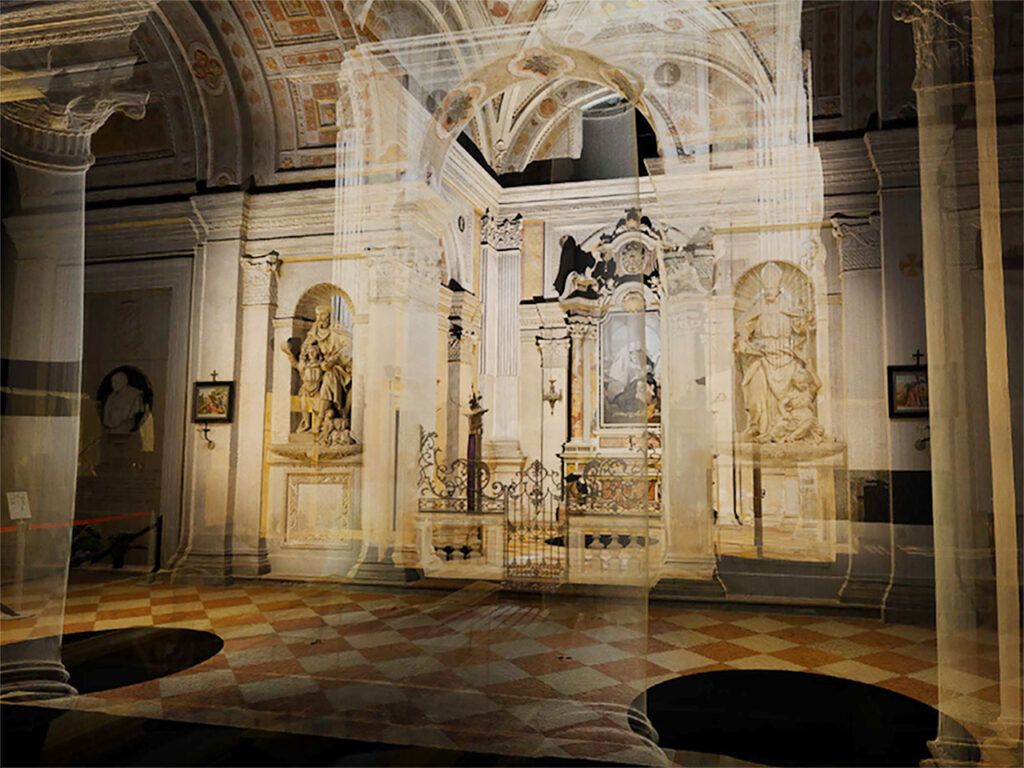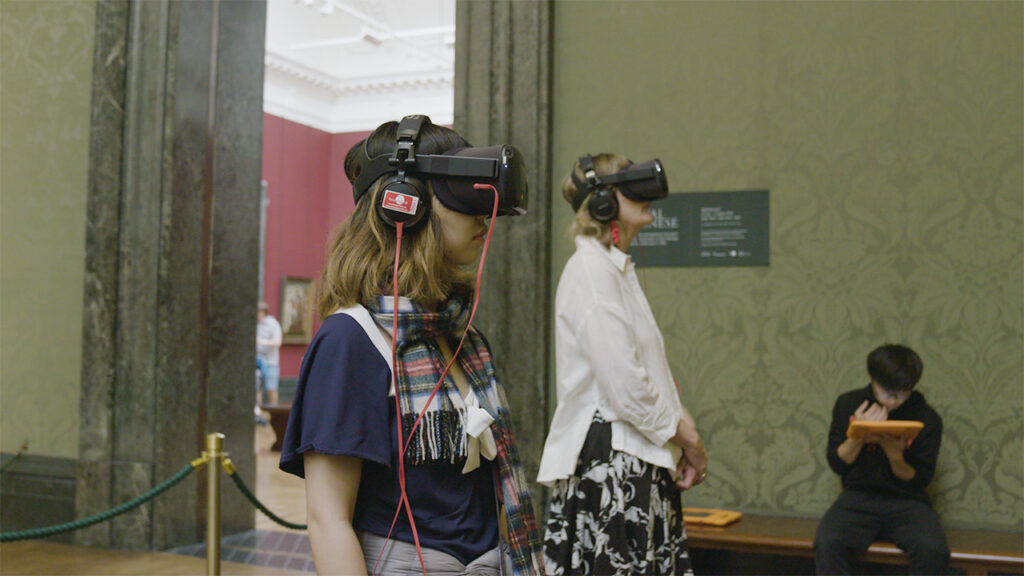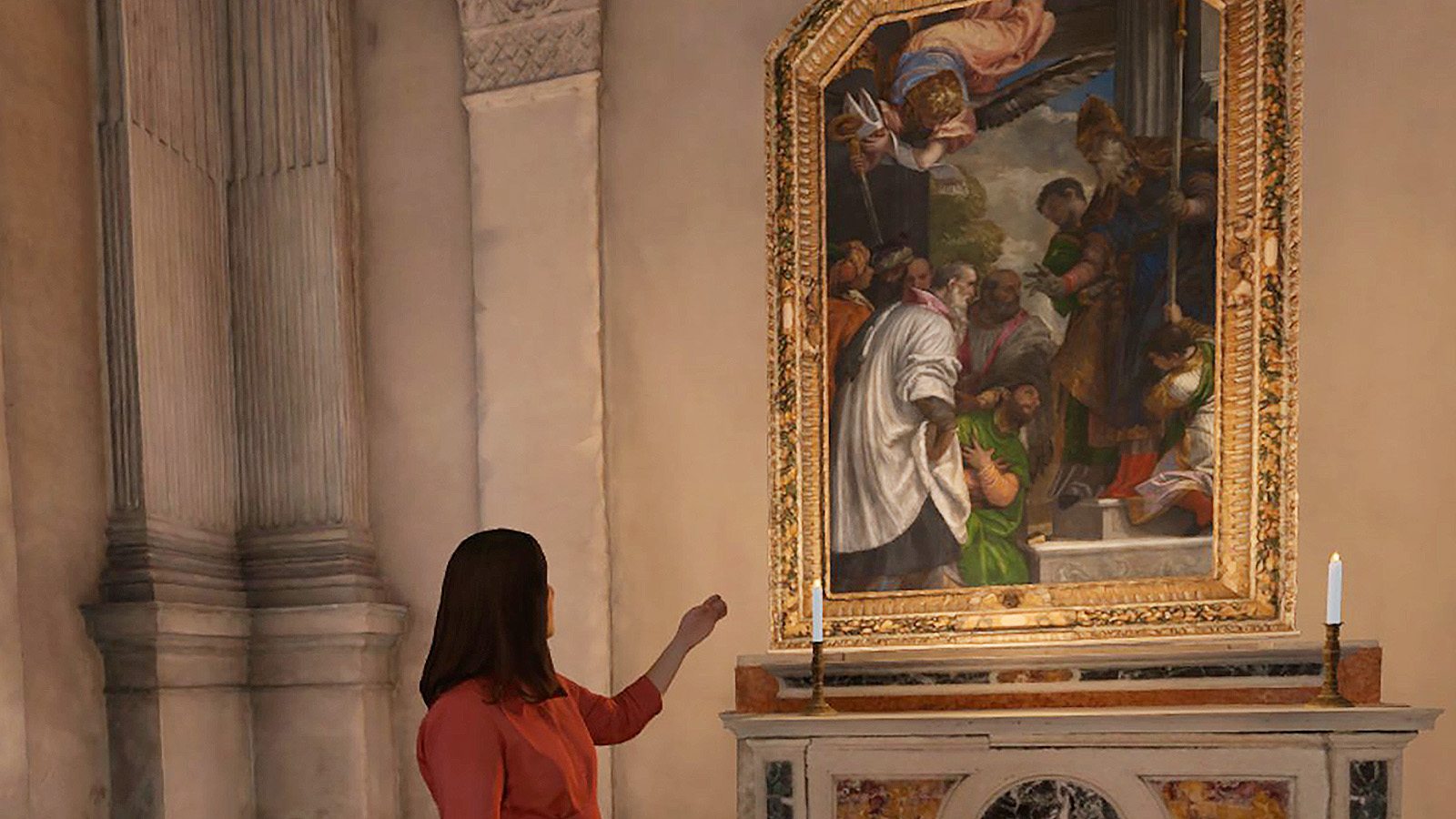More than two centuries ago, Paolo Veronese’s “The Consecration of Saint Nicholas” was the first Old Master painting to be acquired by London’s National Gallery. Today, it’s installed in the institution’s Venetian room, alongside works by Jacopo Tintoretto and Titian, far removed from its intended — and hallowed — milieu.
Originally commissioned in 1561, the painting was created by Veronese for the abbey church of San Benedetto al Po, where it hung as one of three altarpieces until the Napoleonic Wars in the 18th century. However reverent the National Gallery’s environs might be, though, they’re no match for the sanctified air and architecture of a Benedictine monastery which the work was meant to augment. That is, until virtual reality (VR) enters the picture.
What happened

Virtual Veronese features a scale-accurate 3D scan of the Chapel of Saint Nicholas in the Church of San Benedetto al Po, Mantua, Italy. Image: © Created by ScanLAB projects, commissioned by The National Gallery
Last week, the National Gallery opened Virtual Veronese, an onsite VR experience that reinstates “The Consecration of Saint Nicholas” amid a 3D recreation of the San Benedetto al Po chapel. Developed and produced by Focal Point VR, the immersive experience emerges from the museum’s partnership with StoryFutures and support from the Arts and Humanities Research Council.
Within the virtual environment, audiences can view the altarpiece alongside the church’s architecture, scanned from 3D model of the chapel to be scale-accurate. In the background, a soundtrack of Gregorian chants performed by Veneti Cantores from a 1560s choral book helps set the tone and period. Throughout the 30-minute experience, visitors have their choice of guides, which appear as volumetric figures: either Dr. Rebecca Gill, the gallery’s curator, or Abbot Asola, who originally commissioned the painting from Veronese for 123 gold scudi.
Why it matters

The VR experience demonstrates the National Gallery’s plan to use technology to deepen its storytelling and reach wider audiences. Image: © The National Gallery, London
Per the National Gallery’s plan, Virtual Veronese represents an exemplar in immersive storytelling. The experience leverages the spatial qualities of VR to recontextualize Veronese’s work, presenting viewers with new and deeper ways to interact with the work. The addition of guides, particularly a historical figure such as Abbot Asola, further ups audiences’ engagement with both the painting and the platform.
Virtual Veronese also follows the museum’s 2021 mobile-based exhibition, Sensing the Unseen, centered on Jan Gossaert’s “The Adoration of the Kings.” Put together, they demonstrate how the National Gallery is set on using technology to enhance and refresh the stories behind its paintings, vivifying the Old Masters for a young generation of audiences.
What they said
“Virtual Veronese has enabled us to understand how immersive storytelling can add depth of experience, meaning, and emotion to Gallery visitors’ engagement with our paintings.” — Lawrence Chiles, Head of Digital, The National Gallery
“Through this project, we are able to bring architecture into the Gallery and allow our visitors to explore for themselves what it might have been like to stand in front of Veronese’s painting some 500 years ago.” — Dr Rebecca Gill, Ahmanson Curator in Art and Religion (August 2016 – March 2020), The National Gallery



